Quasi-Distributed Active-Mode-Locking Laser Interrogation with Multiple Partially Reflecting Segment Sensors
Abstract
1. Introduction
2. Theory of AML Laser Interrogation
3. Characterization of the PR
3.1. FBG-Type PR
3.2. Fiber FPI-Type PR
4. Interrogation of the Multiple Segment Sensor
4.1. FBG-Type Partially Reflecting Segment Sensors
4.2. Fiber FPI-Type Partially Reflecting Segment Sensors
5. Conclusions
Author Contributions
Funding
Conflicts of Interest
References
- Barrias, A.; Casas, J.R.; Villalba, S. A review of distributed optical fiber sensors for civil engineering applications. Sensors 2016, 16, 748. [Google Scholar] [CrossRef] [PubMed]
- Motil, A.; Bergman, A.; Tur, M. State of the art of Brillouin fiber-optic distributed sensing. Opt. Laser Technol. 2016, 78, 81–103. [Google Scholar] [CrossRef]
- García, Y.R.; Corres, J.M.; Goicoechea, J. Vibration detection using optical fiber sensors. J. Sens. 2010, 2010, 936487. [Google Scholar] [CrossRef]
- Kersey, A.D.; Davis, M.A.; Patrick, H.J.; LeBlanc, M.; Koo, K.P.; Askins, C.G.; Putnam, M.A.; Friebele, E.J. Fiber grating sensors. J. Lightw. Technol. 1997, 15, 1442–1463. [Google Scholar] [CrossRef]
- Jung, E.J.; Kim, C.S.; Jeong, M.Y.; Kim, M.K.; Jeon, M.Y.; Jung, W.; Chen, Z. Characterization of FBG sensor interrogation based on a FDML wavelength swept laser. Opt. Express 2008, 16, 16552–16560. [Google Scholar] [CrossRef] [PubMed]
- Lee, H.D.; Kim, G.H.; Eom, T.J.; Jeong, M.Y.; Kim, C.S. Linearized wavelength interrogation system of fiber Bragg grating strain sensor based on wavelength-swept active mode locking fiber laser. J. Lightw. Technol. 2015, 33, 2617–2622. [Google Scholar] [CrossRef]
- Di Sante, R.; Bastianini, F. Temperature-compensated fibre Bragg grating-based sensor with variable sensitivity. Opt. Lasers Eng. 2015, 75, 5–9. [Google Scholar] [CrossRef]
- Zhan, Y.; Wu, H.; Yang, Q.; Xiang, S.; He, H. Fiber grating sensors for high-temperature measurement. Opt. Lasers Eng. 2008, 46, 349–354. [Google Scholar] [CrossRef]
- Peng, P.C.; Lin, J.H.; Tseng, H.Y.; Chi, S. Intensity and wavelength-division multiplexing FBG sensor system using a tunable multiport fiber ring laser. IEEE Photon. Technol. Lett. 2004, 16, 230–232. [Google Scholar] [CrossRef]
- Claus, R.O.; Gunther, M.F.; Wang, A.; Murphy, K.A. Extrinsic Fabry-Perot sensor for strain and crack opening displacement measurements from—200 to 900 °C. Smart Mater. Struct. 1992, 1, 237–242. [Google Scholar] [CrossRef]
- Lee, B.H.; Kim, Y.H.; Park, K.S.; Eom, J.B.; Kim, M.J.; Rho, B.S.; Choi, H.Y. Interferometric fiber optic sensors. Sensors 2012, 12, 2467–2486. [Google Scholar] [CrossRef] [PubMed]
- Yuan, L.B.; Ansari, F. White-light interferometric fiber-optic distributed strain-sensing system. Sens. Actuators A 1997, 63, 177–181. [Google Scholar] [CrossRef]
- Avila-Garcia, M.S.; Bianchetti, M.; LeCorre, R.L.; Guevel, A.; Mata-Chavez, R.I.; Sierra-Hernandez, J.M.; Jauregui-Vazquez, D.; Reyes-Ayona, J.R.; Estudillo-Ayala, J.M.; Rojas-Laguna, R. High sensitivity strain sensors based on single-mode-fiber core-offset Mach-Zehnder interferometers. Opt. Lasers Eng. 2018, 107, 202–206. [Google Scholar] [CrossRef]
- Hunger, D.; Steinmetz, T.; Colombe, Y.; Deutsch, C.; Hänsch, T.W.; Reichel, J. A fiber Fabry-Perot cavity with high finesse. New J. Phys. 2010, 12, 065038. [Google Scholar] [CrossRef]
- Malka, D.; Katz, G. An Eight-Channel C-Band Demux Based on Multicore Photonic Crystal Fiber. Nanomaterials 2018, 8, 845. [Google Scholar] [CrossRef] [PubMed]
- Malka, D.; Berkovic, G.; Tischler, Y.; Zalevsky, Z. Super-Resolved Raman Spectra of Toluene and Toluene–Chlorobenzene Mixture. Spectrosc. Lett. 2015, 48, 431–435. [Google Scholar] [CrossRef]
- Malka, D.; Berkovic, G.; Hammer, Y.; Zalevsky, Z. Super-resolved Raman spectroscopy. Spectrosc. Lett. 2013, 46, 307–313. [Google Scholar] [CrossRef]
- Roriz, P.; Carvalho, L.; Frazão, O.; Santos, J.L.; Simões, J.A. From conventional sensors to fibre optic sensors for strain and force measurements in biomechanics applications: A review. J. Biomech. 2014, 47, 1251–1261. [Google Scholar] [CrossRef] [PubMed]
- Bao, X.; Chen, L. Recent progress in distributed fiber optic sensors. Sensors 2012, 12, 8601–8639. [Google Scholar] [CrossRef] [PubMed]
- Cibula, E.; Donlagic, D. In-line short cavity Fabry-Perot strain sensor for quasi distributed measurement utilizing standard OTDR. Opt. Express 2007, 15, 8719–8730. [Google Scholar] [CrossRef] [PubMed]
- Shi, Y.; Feng, H.; Zeng, Z. Distributed fiber sensing system with wide frequency response and accurate location. Opt. Lasers Eng. 2016, 77, 219–224. [Google Scholar] [CrossRef]
- Casas Rius, J.R.; Rodríguez, G.; Villalba Herrero, S. SHM by DOFS in civil engineering: A review. Struct. Monit. Maint. 2015, 2, 357–382. [Google Scholar] [CrossRef]
- Dong, Y.; Chen, L.; Bao, X. Extending the sensing range of Brillouin optical time-domain analysis combining frequency-division multiplexing and in-line EDFAs. J. Lightw. Technol. 2012, 30, 1161–1167. [Google Scholar] [CrossRef]
- Rodriguez, G.; Casas, J.R.; Villalba, S. SHM by DOFS in civil engineering: A review. Struct. Monit. Maint. 2015, 2, 357–382. [Google Scholar] [CrossRef]
- Lee, H.D.; Jeong, M.Y.; Kim, C.S.; Shin, J.G.; Lee, B.H.; Eom, T.J. Linearly wavenumber-swept active mode locking short-cavity fiber laser for in-vivo OCT imaging. IEEE J. Quant. Electron. 2014, 20, 1101008. [Google Scholar] [CrossRef]
- Shrivastava, A.; Gupta, V.B. Methods for the determination of limit of detection and limit of quantitation of the analytical methods. Chron. Young Sci. 2011, 2, 21. [Google Scholar] [CrossRef]


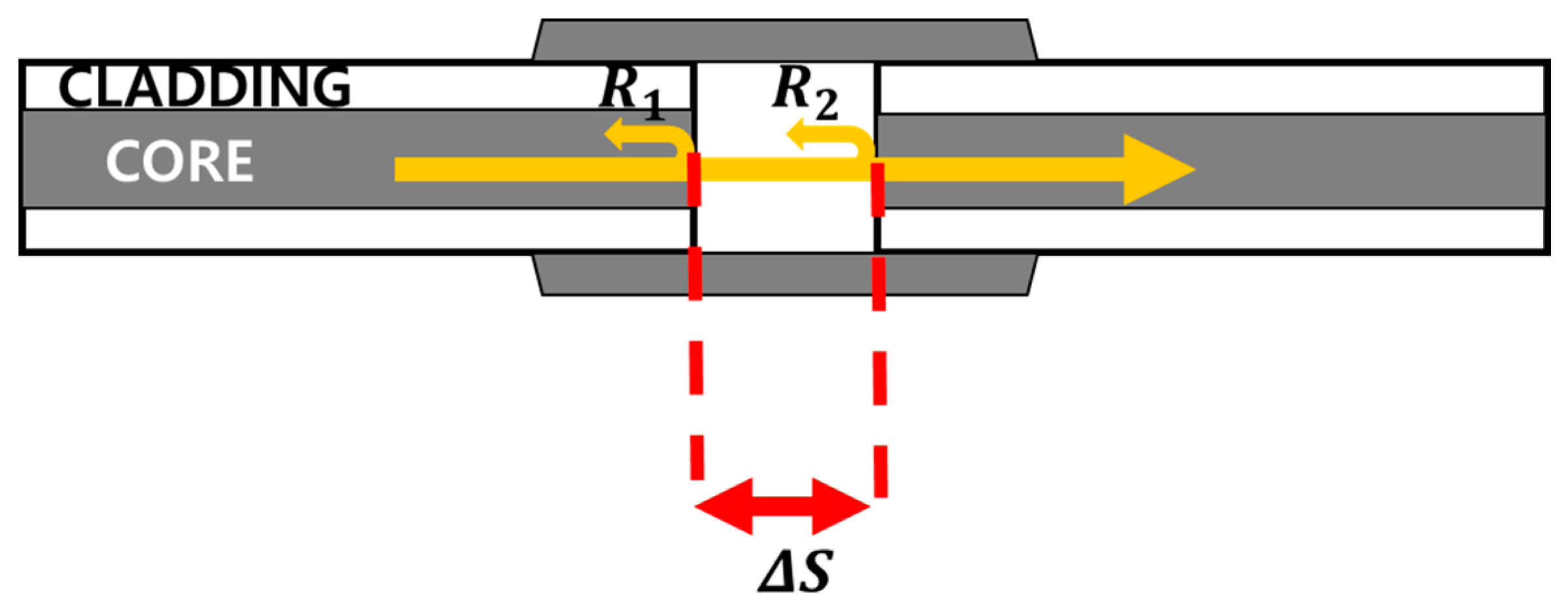



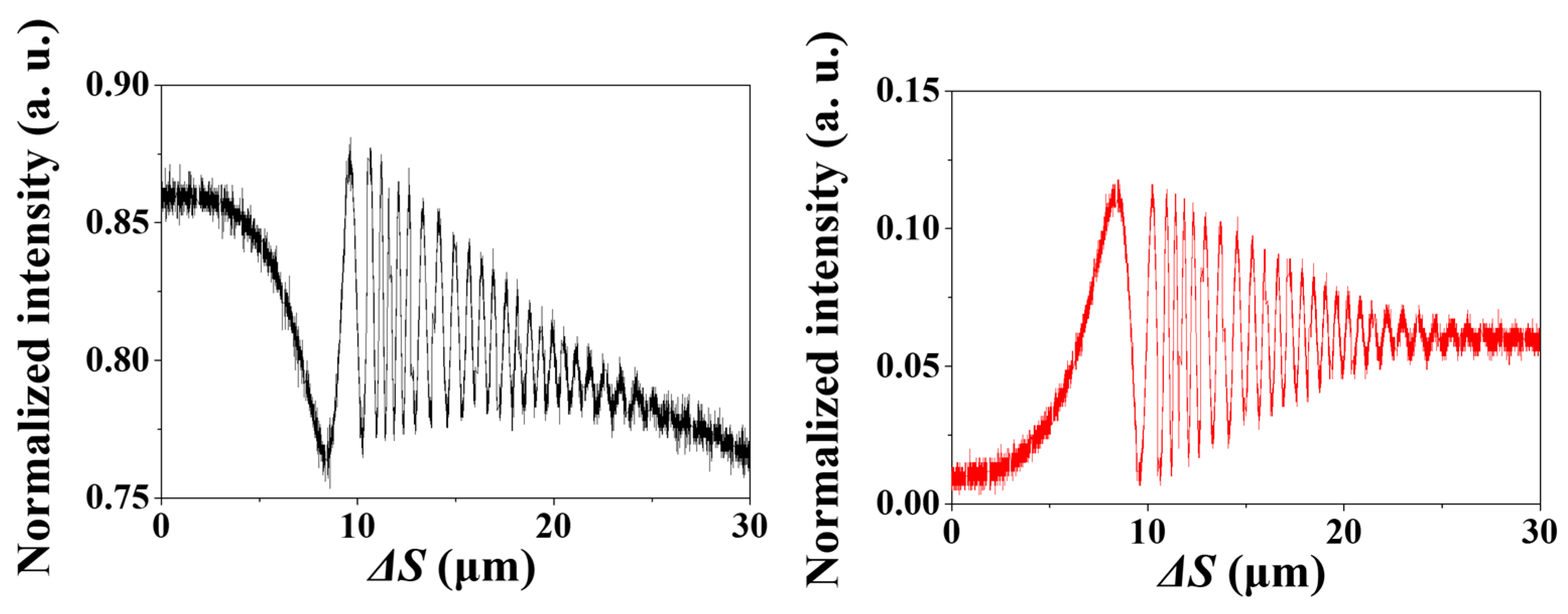

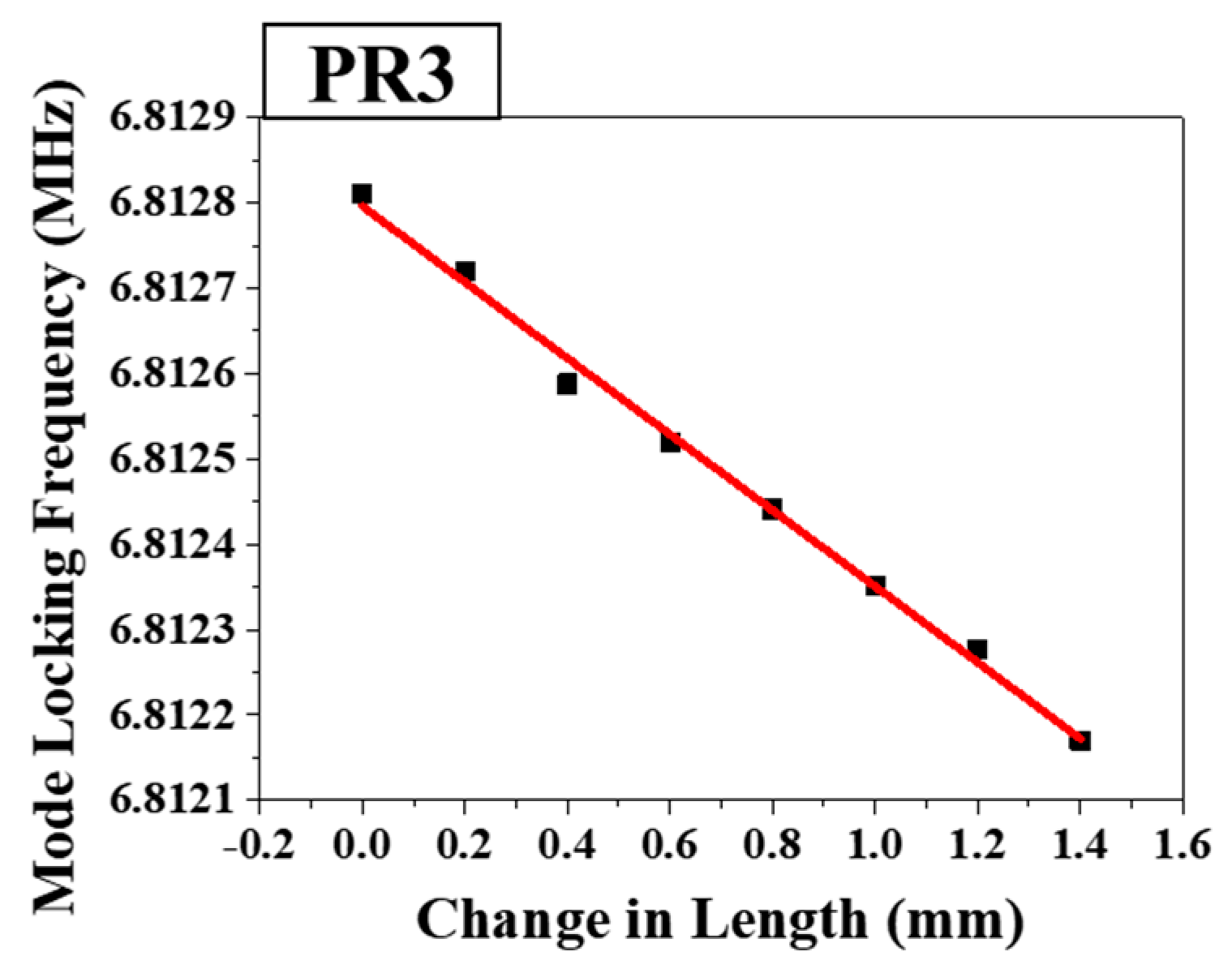
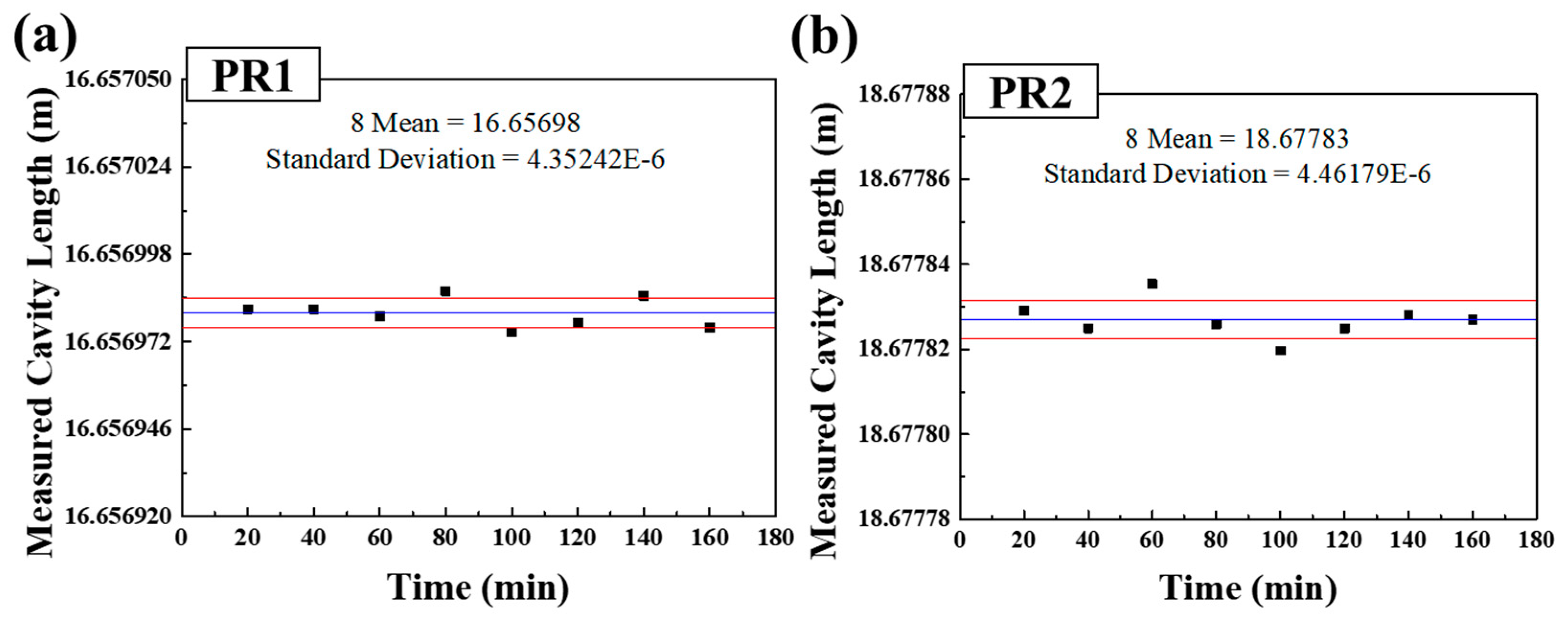
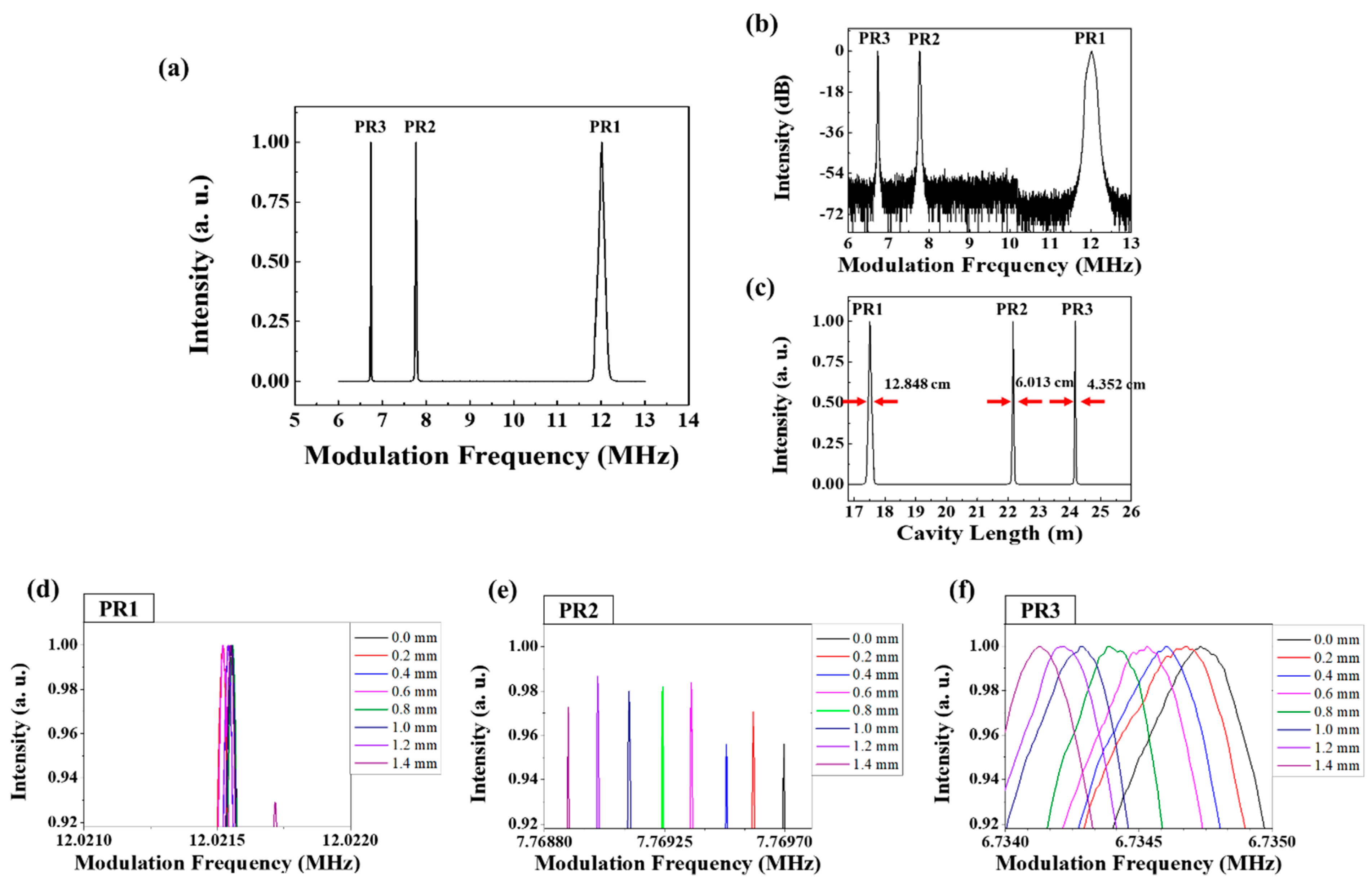
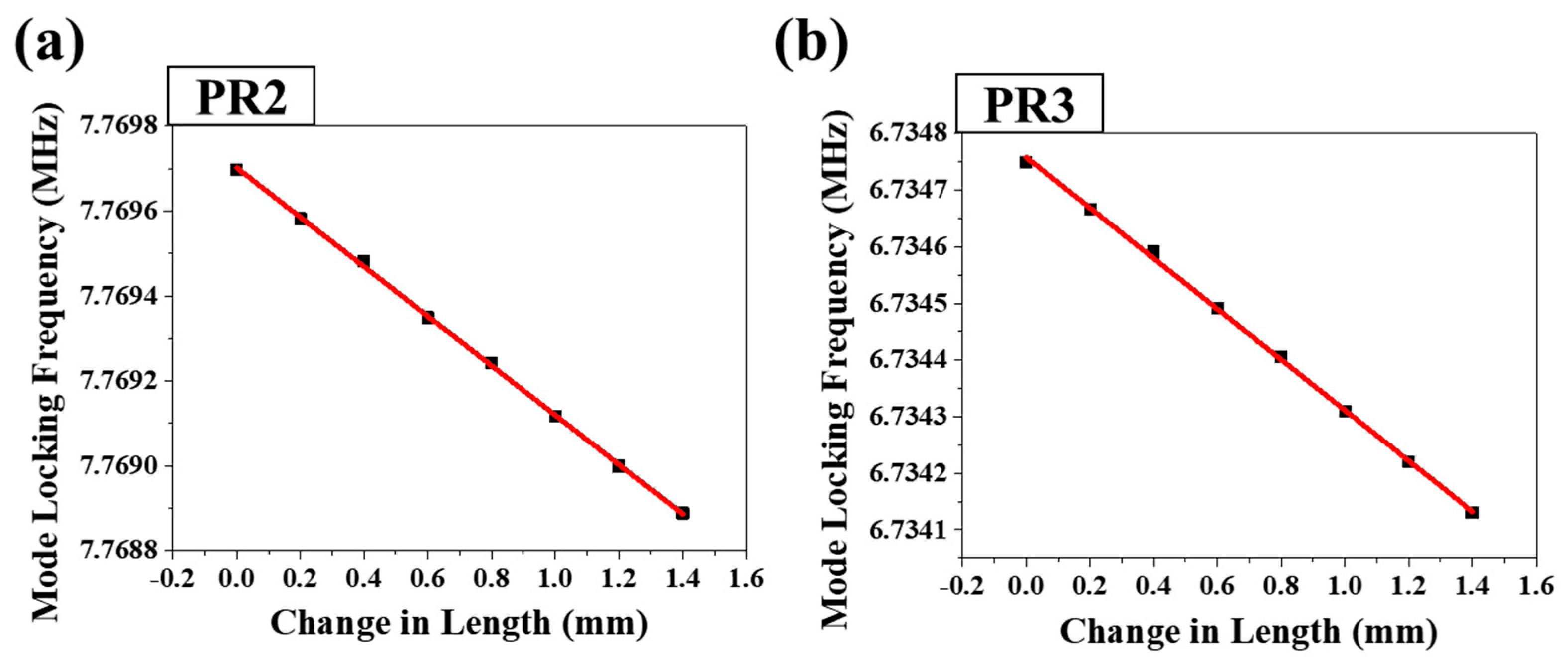
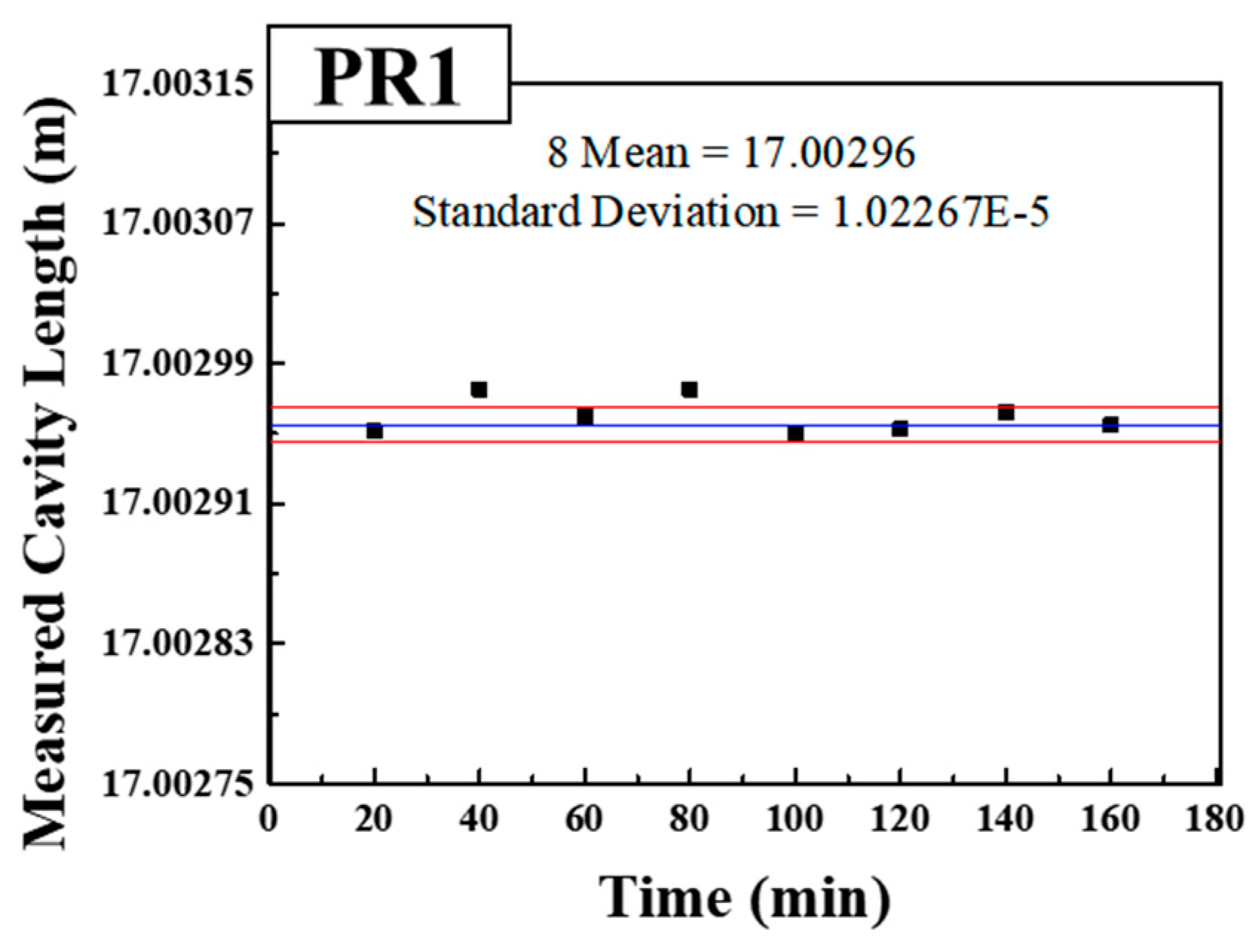



© 2018 by the authors. Licensee MDPI, Basel, Switzerland. This article is an open access article distributed under the terms and conditions of the Creative Commons Attribution (CC BY) license (http://creativecommons.org/licenses/by/4.0/).
Share and Cite
Park, C.H.; Kim, G.H.; Hong, S.W.; Lee, H.D.; Kim, C.-S. Quasi-Distributed Active-Mode-Locking Laser Interrogation with Multiple Partially Reflecting Segment Sensors. Sensors 2018, 18, 4128. https://doi.org/10.3390/s18124128
Park CH, Kim GH, Hong SW, Lee HD, Kim C-S. Quasi-Distributed Active-Mode-Locking Laser Interrogation with Multiple Partially Reflecting Segment Sensors. Sensors. 2018; 18(12):4128. https://doi.org/10.3390/s18124128
Chicago/Turabian StylePark, Chang Hyun, Gyeong Hun Kim, Suck Won Hong, Hwi Don Lee, and Chang-Seok Kim. 2018. "Quasi-Distributed Active-Mode-Locking Laser Interrogation with Multiple Partially Reflecting Segment Sensors" Sensors 18, no. 12: 4128. https://doi.org/10.3390/s18124128
APA StylePark, C. H., Kim, G. H., Hong, S. W., Lee, H. D., & Kim, C.-S. (2018). Quasi-Distributed Active-Mode-Locking Laser Interrogation with Multiple Partially Reflecting Segment Sensors. Sensors, 18(12), 4128. https://doi.org/10.3390/s18124128





